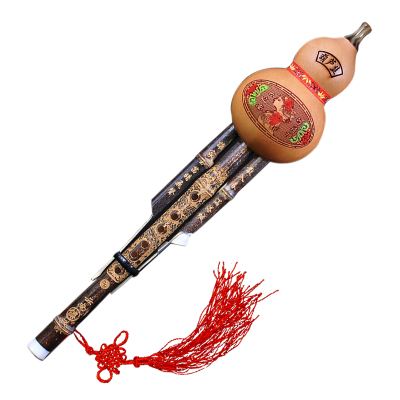Study on the vocal range characteristics and tonality of hulusi
Hulusi, as a traditional wind instrument originating from Yunnan ethnic group in China, is deeply loved by music lovers for its unique melodious tone and profound cultural heritage. The characteristics of its vocal range and tone determine the unique charm and expression of hulushi music to a large extent.

First of all, from the perspective of vocal range, the range of fenugreek is relatively narrow, usually between an octave and an octave plus a minor third. The range of common C-key fenugreek is roughly between low D (do) and high A (la), due to the slight differences in the design of each mode of fenugreek, the range of fenugreek in different tones will vary, but generally remain in a relatively small interval. This limited vocal range gives hulusi music a unique graceful, long and full of emotional characteristics, making it particularly suitable for playing lyrical repertoire and rich national style music.
Secondly, regarding the tonality of fenugreek, common fenugreek on the market have C, D, F, G and other tonality, of which C is the most popular. Each type of key has a fixed scale structure and range, and the performer can choose the right key according to different musical works and personal preferences. In addition, there are variations such as fine tuning and chromatic fenugreek. By adding keys or improving the design of the mouthpiece, the vocal range is extended to a certain extent, and more semitones can be played, thus enriching the expression technique of fenugreek and adapting to the breadth of the repertoire.
In general, the range characteristics and tonality selection of hulusi are an important part of its musical artistic charm, which has far-reaching significance for understanding and appreciating hulusi music. With the development of modern craft technology and the diversified needs of music creation, the design of hulusi is also constantly improving and perfecting, and strives to broaden the range and enrich the tonality on the basis of maintaining the original timbre characteristics, so as to meet the broader space of artistic expression.
 渝公网安备 50010702504639号
渝公网安备 50010702504639号